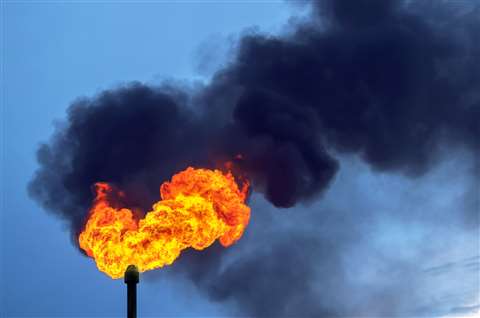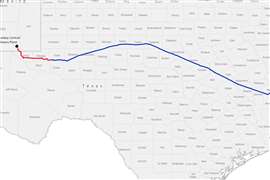Read this article in 中文 Français Deutsch Italiano Português Español
Monitoring Government: EPA tightens oil & gas emission rules
January 30, 2023
 Photo: Adobe
Photo: Adobe
In November, the U.S. Environmental Protection Agency (EPA) rolled out its supplemental proposed methane emissions rule, primarily aimed at the oil and gas industry.
“The updates, which supplement proposed standards EPA released in November 2021, reflect input and feedback from a broad range of stakeholders and nearly half a million public comments,” the EPA said in a press release. “The updates would provide more comprehensive requirements to reduce climate and health-harming air pollution, including from hundreds of thousands of existing oil and gas sources nationwide.”
Oil and natural gas operations are the nation’s largest industrial source of methane, the EPA said, noting that the greenhouse gas traps about 80 times as much heat as carbon dioxide, on average. EPA said the proposed standards would reduce an estimated 36 million tons of methane emissions from 2023 to 2035, the equivalent of 810 million metric tons of carbon dioxide, or nearly the same as all greenhouse gases emitted from coal-fired electricity generation in the U.S. in 2020.
To be sure, it would be impossible to outline all aspects of the rule in the space of this column, but here are just a few. The supplemental proposal would:
Ensure that all well sites are routinely monitored for leaks at less cost, and until they are closed properly.
Require that flares are properly operated to reduce emissions, and revise requirements for associated gas flaring. The proposal requires that available gas must be rerouted for beneficial uses unless an operator can show that all beneficial uses outlined in the supplemental proposal are unsafe or infeasible. Flaring of associated gas would be permitted only if a professional engineer or other qualified individual certified that a sales line is not available and other beneficial uses are not feasible.
Establish a super-emitter response program, which includes qualified third-party monitoring of events in which methane is emitted at a rate of at least 100 kilograms per hour. The third party would notify the operator, the EPA and other parties of the situation.
Establish emission standards for dry seal compressors, which are currently unregulated.
Responding to the proposed rule in November, Amy Andryszak, president and chief executive officer of the Interstate Natural Gas Association of America (INGAA), said the organization’s members already are making progress in minimizing methane emissions.
“To be successful, methane regulations should allow our engineers and technicians appropriate flexibility to further reduce emissions from natural gas operations, using a range of available technologies and tools, while avoiding activities that may impair energy reliability,” she said. “We are reviewing the details of the EPA’s proposals against these principles and plan to engage with the agency on any of the proposed requirements that will impact the natural gas transmission industry’s ability to efficiently deliver reliable energy while minimizing emissions.”
The EPA said it would take comments on the supplemental proposal until February 13, 2023. The agency could move forward with the final standards later this year.
American Petroleum Institute Senior Vice President of Policy, Economics and Regulatory Affairs Frank Macchiarola also noted the industry was already taking action, “and as a result, methane emissions relative to production fell 60% from 2011 to 2020.”
“Our stronger standards will work hand in hand with the historic level of resources from the Inflation Reduction Act to protect our most vulnerable communities and to put us on a path to achieve President Biden’s ambitious climate goals,” said EPA Administrator Michael Regan.
Speaking of the Inflation Reduction Act, the US$700 billion measure includes a fee on methane emissions. Excess methane emissions from oil and gas facilities would face a fee of US$900 per metric ton in 2024. The proposed charge would jump to US$1,200 in 2025 and then US$1,500 in 2026 and subsequent years. The fee would apply to both onshore and offshore oil and gas production, along with transmission compression equipment, storage equipment, as well as onshore natural gas pipelines and equipment used for liquefied natural gas storage.
MAGAZINE
NEWSLETTER

CONNECT WITH THE TEAM








